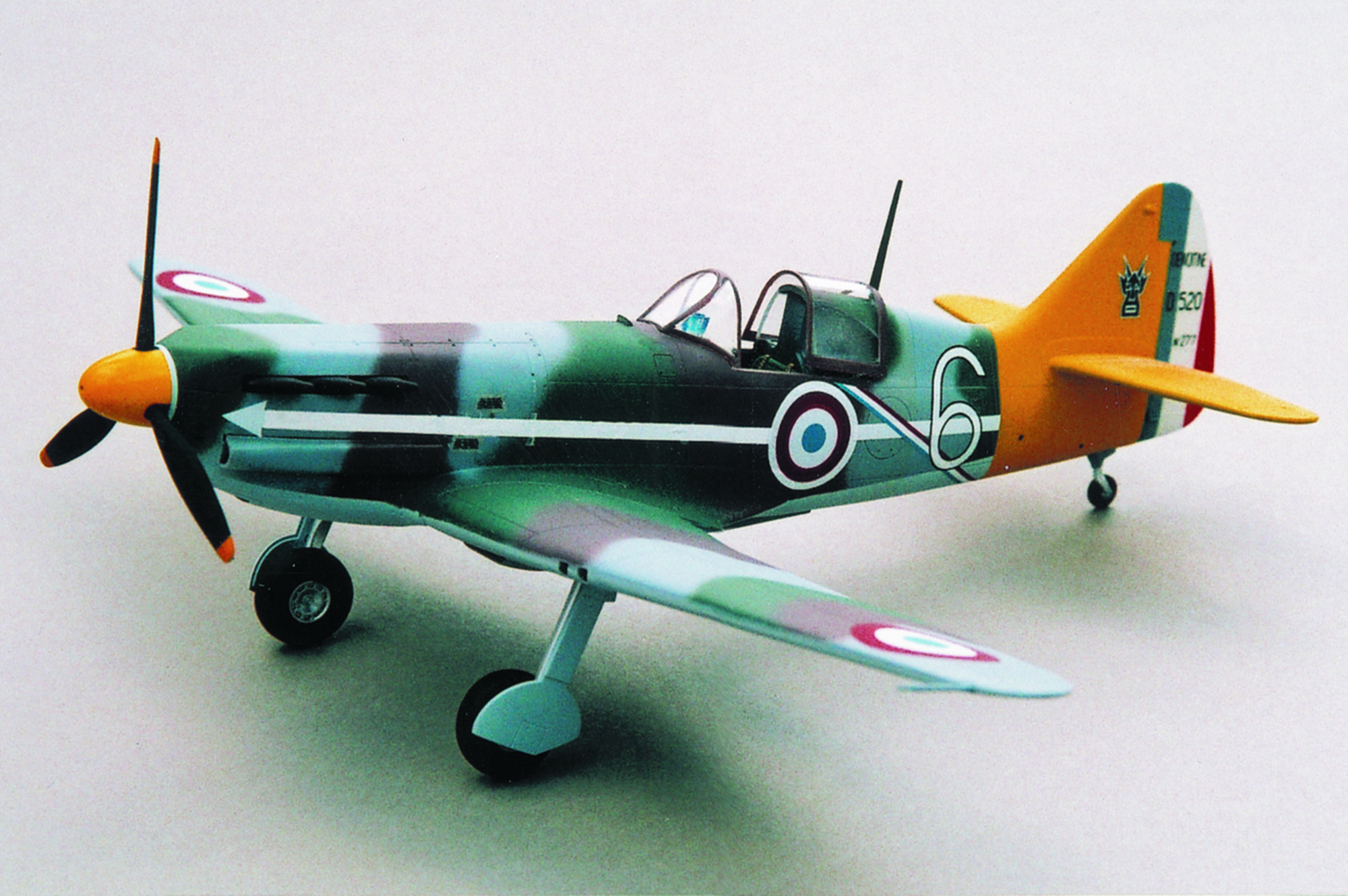One French pilot who took full advantage of the Dewoitine D.520’s speed and agility was Sous-Lieutenant Pierre Le Gloan of GC III/6. Le Gloan fought for the Allies, the Vichy government and for the Allies again, racking up 18 confirmed victories and three probables.
In the hands of an experienced pilot such as Le Gloan, the D.520 was more than a match for the Luftwaffe’s Me-109s. Some historians have even speculated that, had there been more of these aircraft available to the Armee de l’Air in 1940, there might have been a different outcome for the German invasion of France.
A model of Le Gloan’s D.520 is available from Tamiya in 1/48th scale. The instructions call for construction to begin with assembly and painting the detailed cockpit dark gray. This may be accurate, but as I believe the dark color hides many of the details, I used several shades of gray to set off the sidewalls, floor and rear cockpit armor plate. The seat is khaki green, with seat belts taken from an etched set from Eduard, 48-282. Placing a few dots of red and yellow on the instrument panel should also add some interest to the “front office.”
While the cockpit paint is drying, glue the horizontal stabilizers to the fuselage sides from the inside. Careful application of the cement from the inside will all but eliminate any adhesive residue from the joint on the outside. Trap the cockpit into the fuselage slots, then glue the sides together.
The exhaust stubs should be painted “burnt iron” and saved for attachment later. Assemble the wings and glue them to the fuselage. This kit is well engineered, and the fit here should require only a small amount of filler on the fuselage underside. Glue the flaps together and set them aside. They can be posed in the up or down position after painting.
After painting the inside of the radiator silver, decide if you want to show it open or closed. Attach the completed radiator under the wing and the air intake to the front of the lower fuselage. The main construction of the aircraft is now complete. Check over the seams and fill and sand any gaps. A primer coat of light gray will help to show up any flaws in construction.
During Le Gloan’s assignment to Syria in May 1941, the aft portion of his D.520’s fuselage was painted bright yellow. A color drawing of his aircraft is shown on P. 53 of French Aces of World War 2, by Barry Ketley, from Osprey’s “Aircraft of the Aces” series.
The camouflage colors for the aircraft have no Federal Standard equivalents but are available from Model Master. The underside is French light blue-gray. The topside is an irregular pattern of French dark blue-gray, khaki and chestnut. A full-scale drawing of the camouflage pattern is included in the kit.
Le Gloan’s D.520 carried his country’s tricolors on the rudder. The kit supplies these stripes as decals, but they are difficult to apply. I painted them using insignia red, insignia white and navy blue-gray. The spinner of the propeller should be painted the same yellow as the aft portion of the fuselage. After the paint has dried, spray the entire model with Testors glosscoat or Future acrylic floor polish to provide a smooth surface for the decals.
A complete set of markings for Lieutenant Le Gloan’s aircraft is provided in the kit, but these decals are very thin and take great care to apply. I recommend that you use Micro Scale’s Super Set decal setting solution to “float” the markings into place using a small paintbrush. The “arrow stripe” on the fuselage side is particularly difficult to apply. I snipped off the point of the arrow and substituted the rest of the stripe for some white decals from Scale Master sheet SM-10.
With the decal work complete, spray on a coat of Testors dullcoat to seal the markings. Next spray the propeller blades flat black and the tips yellow. The landing gear legs, gear doors and wheels should be painted according to the instructions and attached to the model. The last job is to paint the frames of the windscreen and canopy and attach them to the fuselage with white glue. Lieutenant Le Gloan’s D.520, as it appeared in Syria in 1941, is now ready for display.

